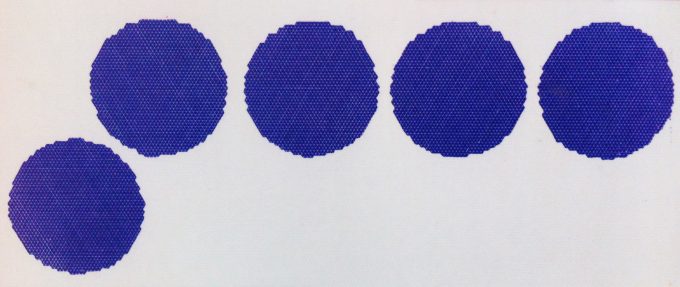Lucio Fontana, did not just work with the vulnerable canvas but also the most resistant ceramic. During the early twentieth century, the currents that came close to this support were different, giving way to experiments which connection to Futurism and Spatialism can still today be a strugle for us. The center of gravity was Albissola Marina, a Ligurian town where great talented artists gathered in those years, including Marinetti, Tullio Mazzotti, Diulgheroff, Capogrossi and, of course, Fontana. Its productivity was extraordinary; Esa Mazzotti, the nephew of Tullio, was then only a little girl but was able to admire, at the Mazzotti factory, the great work with which Fontana and others, like Manzoni and Sassu, approached the pottery. Fontana himself, in a letter dated October 1, 1937, confesses to his friend Tullio that he has made about 300 pottery in just one month, as a prove of the great commitment.
The Promenade of Artists in Albissola Marina still hosts a Space Concept beyond which we can not only see but that we can touch and – even – observe walking over it. The round shapes of blue that show us today’s work, completed by the three ‘Nature’ in bronze, are the testimony of the artist’s spatial research. As mentioned, he worked at the factory of Tullio Mazzotti unaware that in the destiny of these his first experiments there will be the definition of a new art in his White Manifesto. By requiring an art in greater agreement with the needs of the present man and the new spirit, the artist states: “”New art takes its elements from nature. Existence, nature, and matter are a perfect unit. They develop in time and space. Change is the essential condition of existence. Movement, the property of evolving and developing is the basic condition of matter. This exists in motion and in no other way. Its development is eternal. ”
The exploration of spatial concepts led him to his most famous works, the so-called holes and cuts, but not only. During his artistic activity, Fontana made numerous works with different media; from the most traditional figurative sculptures to space environments, using innovative materials for his time, always experimenting and moving with great freedom and eccletticism from one medium to another. Perhaps, here we can find the reason for the slow recognition of his work. By constantly manipulating Kitsch’s components, using them as a background in an often ironic and provocative way, he offered a new perspective of art to the new man (of which he speaks in the Manifesto) destroying both the existing distinction and the boundaries between avant-garde and Kitsch.
His art is four dimensional: art that develops in time and space. And though, using the artist’s words, over time will die as a matter, it will remain eternal as a gesture, as well as his attempt to free art from matter by adding a fourth dimension, will remain eternal. Returning to today’s work, the par excellence example of fourth-dimensional art, space, space art, the “Nature” essentially correspond to that cosmic imagination that the artist often referred to as concerned about transformation and density movable but indestructible of matter. Inspired by the thoughts of the “atrocious and disturbing silence” that awaits man in space leaves us a “living sign” of the artist’s presence at Albissola Marina.
Fontana’s profound and surprising survey passed from here; on the rigid ceramic he tried to reveal what he would discover decades later over the canvas.
Lucio Fontana,
Space concept,
1960,
Ceramics,
Albissola Marina, The Promenade of Artists
We also invite you to discover the other works that make up the Promenade of Artists, from the original name ‘Lungomare degli artisti’.
